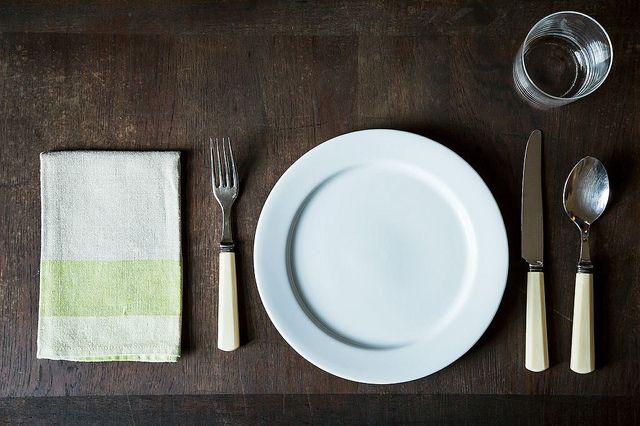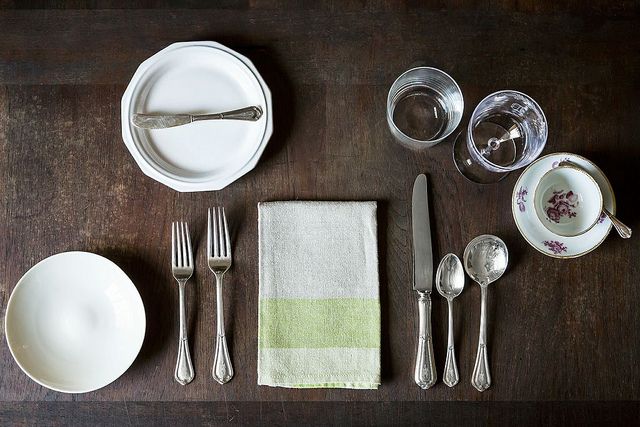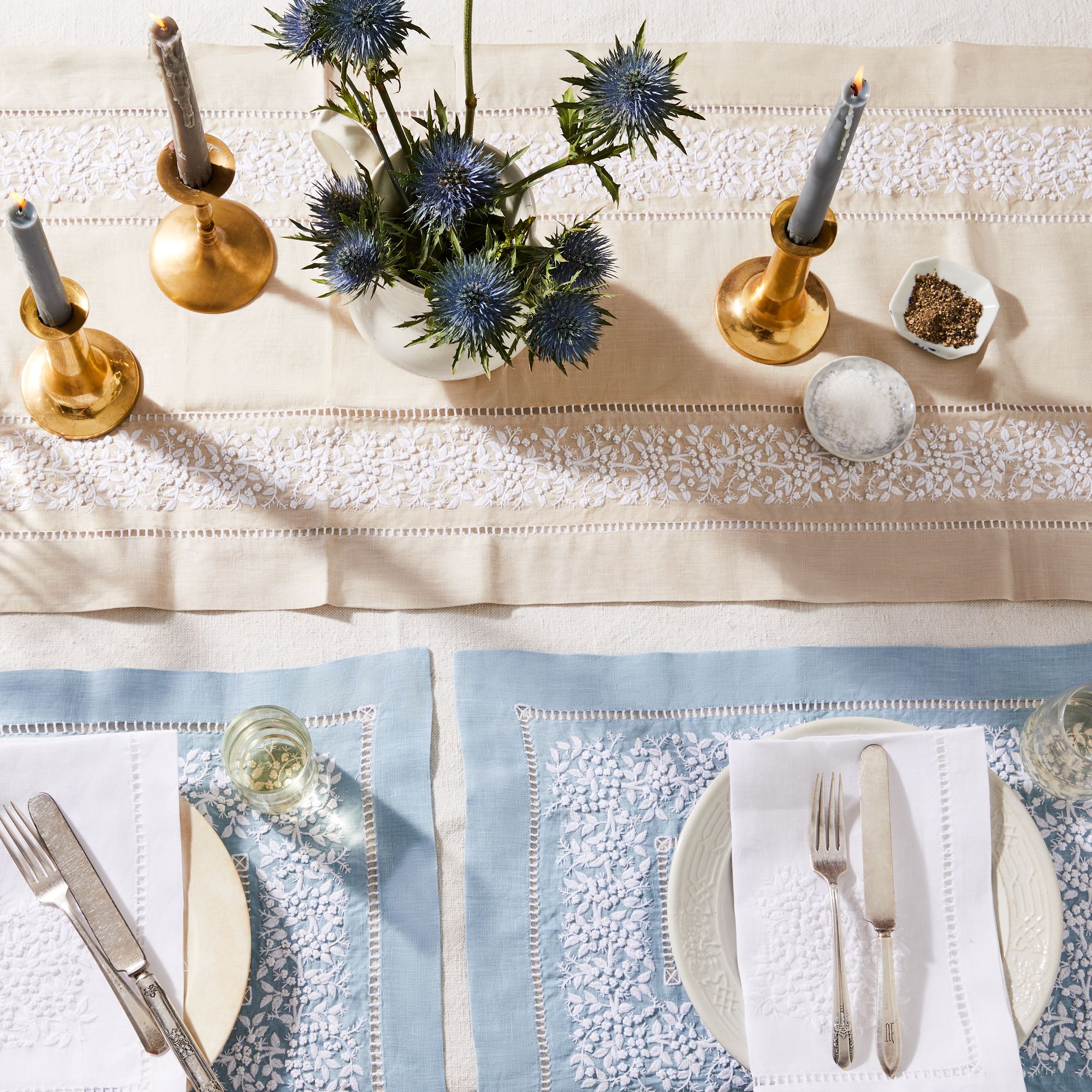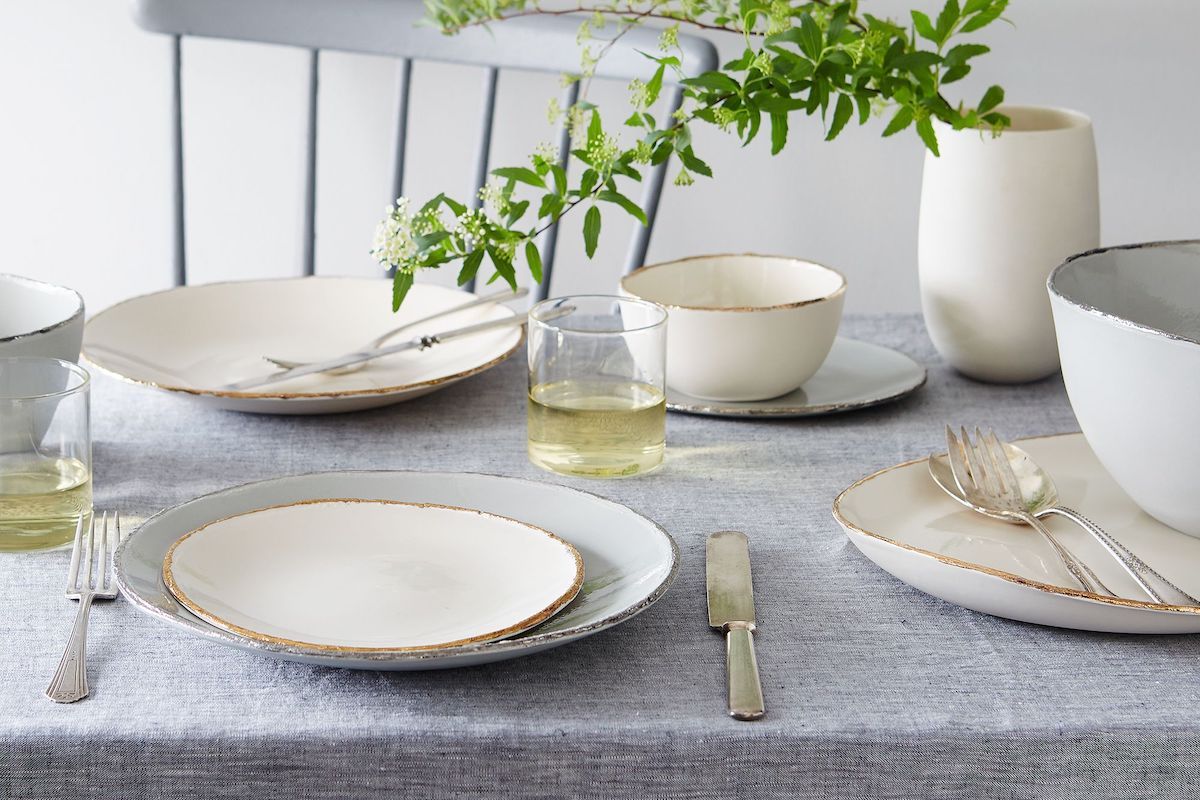Rejoice! Dinner gatherings are gently making their way back into our lives, albeit in smaller format, thanks to the lovely folks behind the vaccine rollout — you know the ones. Those of us accustomed to regularly welcoming friends and family into our homes have surely been suffering this past year, missing the act of refilling wine glasses and setting dishes out on the table with a flourish — not to mention raucous dinner table conversation. With the increase of vaccinations and easing of the weather, there's a good chance of gathering with loved ones on the forecast this summer.
That said, all this time away from entertaining and dining may have left some of us forgetting table setting protocol — which fork goes where, again? Or perhaps you've never really been interested in all the rules and regs, but the idea of laying out a proper place for your old-but-new guests now sounds like a special addition to a long-awaited reunion. Maybe you're even feeling nostalgic for the days you spent serving steaks on white tablecloths, and want to brush up on your hidden-away skills for a simple night at home.
No matter where you fall on the spectrum — longstanding etiquette expert or cutlery placement novice — it's always a good time for a brush-up on the basics of setting a table. Luckily, it's really not too difficult to lay out your existing wares in a pleasing (and proper!) fashion, so read on for all the ways to set your table, from bare bones to straight out of an episode of The Crown.
First, the ABCs of table setting:
- Place the plates on the center of the placemat.
- Lay the napkin to the left of the plate, or get fancy with a fold — it's easier than you think.
- Place flatware from the outside in, according to what you'll be using first (anyone who's seen Pretty Woman knows that one).
- Knives always sit to the right of the plates, and the blades always face in, toward the plate.
- The water glass sits above the knife, sort of where 1 o'clock would be on a clock face.
- The fork generally sits to the left of the plate, with, or placed on, the napkin.
- Spoons always go to the right of knives.
While these are the foundational guidelines for setting a table, it's important to remember to relax. Your table doesn't always need to look like it's jumped right out of a scene in Bridgerton. Often, we worry so much about getting every last detail right that we forget that when you invite guests over for a home-cooked meal, the last thing they're probably complaining about is how you set your table.

Basic
The basic table setting is what most of us would use for weeknight dinners (that don't involve a TV dinner), or a weekend breakfast with the family. There's really no need for frills in this case, unless you want them.
The basic table setting includes:
- A dinner plate
- A fork to the left, a knife, and a spoon to the right
- A drinking glass over the knife, and a napkin to the left of the plate, or on it
If this is a casual weeknight affair, and you aren't serving a dish that requires a spoon, you can happily leave it off your table. If you like the idea of using placemats, these could upgrade your Wednesday dinners without getting too fussy.

Informal
Maybe you're hosting a casual brunch for friends, or you're making a nice (but not that nice) dinner, and your menu includes a few courses. This is the informal setting you're looking for, according to these etiquette experts. Read into that what you will, because it looks pretty fancy to us. Essentially, you need to think of the informal setting as a built-up version of the casual setting. However, if the only upgrade from casual you're thinking of is that there's wine and an appetizer thrown in, subtract from this as you will.
In this setting, you have:
- A napkin resting where your dinner plate will go
- A salad fork and a dinner fork, arranged outside-in
- A soup spoon, if you're serving soup, a dessert spoon, and a dinner knife (yes, in that order, even though dessert comes after entrées).
- A salad plate to the left of your forks
- The bread plate, with the appropriate knife, above the forks
- A water glass with a wine glass to its right
- A tea or coffee cup to the right of the wine glass

Formal
This is the setting for a holiday feast, or any other show-stopping meals you might want to serve. Let's pretend, in this case, that we're serving oysters, soup, salad, a fish course, and entrée. Traditionally, formal settings also forgo placemats, but that's up to you — some prefer to use a round placement under the charger.
One of the big additions to this setting is the use of a charger, or presentation plate, which is essentially a plate that no one eats from. While the charger does feel very formal, and traditonal etiquette dictates that it's a proper part of the formal table setting, we sometimes feel like it's just another dish to wash (and like they make more sense if you have Downton Abbey-style kitchen staff making and serving your meals). If you own chargers, though, and like using them, more power to you.

Your setting will need:
- A charger, or service plate, resting under the plate your first course will be served in
- A salad fork, a fish fork, and a dinner fork
- An oyster fork (which is the only fork that sits to the right of the plate), a soup spoon, fish knife, and a dinner knife
- Bread plate and butter knife above the forks
- A water glass, a white wine glass, and a red wine glass
- If using a placecard, the most traditional is to center it to the plate, at the top
After each course, the associated plate or bowl is cleared to make room for the next, which takes the position of the previous. After dinner, dessert and coffee or tea will be served separately with the appropriate serveware, of course. Unless, you're entertaining at a palace, in which case dessert cutlery is always included in the setting, and is always above the plate.
Going rogue
 There are some rules, like knife blades facing the plate or arranging cutlery outside-in, that we try not to break but we're always open to new ideas that mix things up on the table-setting front. Here are some of ours:
There are some rules, like knife blades facing the plate or arranging cutlery outside-in, that we try not to break but we're always open to new ideas that mix things up on the table-setting front. Here are some of ours:
Breaking out the fine china is great, but so is showing off your creativity by mixing — and matching — different sets of china — just make sure they complement each other in color or pattern. A simple trick is to have one style for your basic place settings and mix it up with the accent pieces such as the salad and dessert plates.
- Throw in some colorful glassware instead of sticking with a colorless glass palette.
- Mix vintage with new flatware for added juxtaposition.
- Add an elaborately folded napkin with a more traditional napkin ring, wrap it with a seasonal material, do something fun and have it pop up out of the glass, hang it off the table.
- Have fun with picking tablecloths and runners to add color and texture to your setting.
Now that we've got a better handle on setting tables for various occasions, we can safely focus on anticipating and avoiding other common entertaining mishaps.




Shares